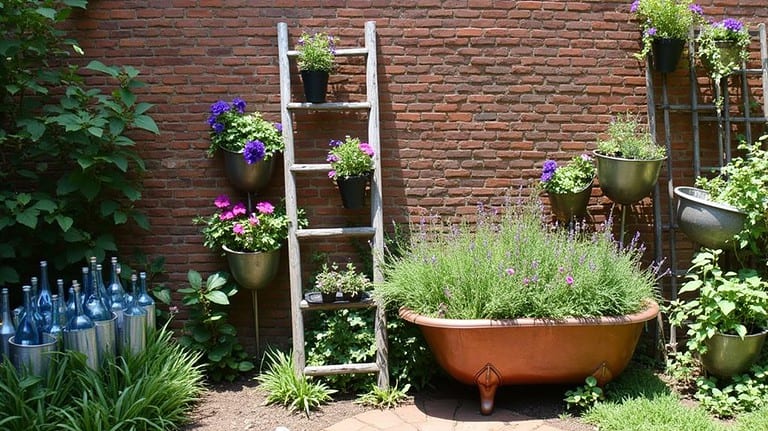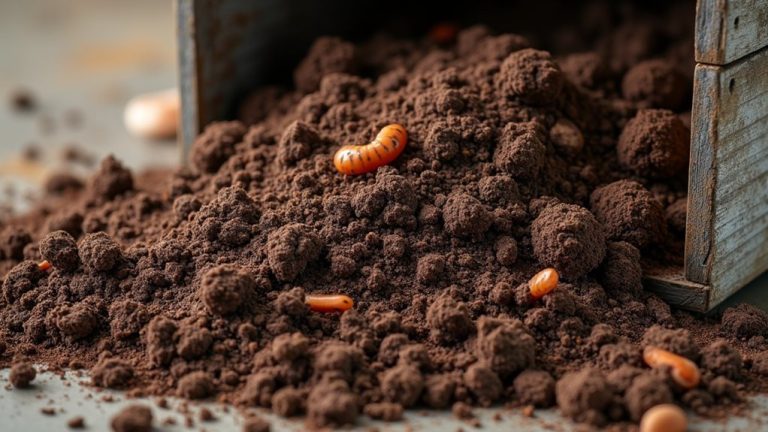How to Freeze Squash for Long-Term Storage
Pick a firm winter squash like butternut, peel and cube it into even pieces, then blanch cubes 3 minutes (longer if you’re up high), shock in ice water, drain and pat dry; tray-freeze single layers so they don’t clump, then bag or container-seal with air pressed out and label, storing at 0°F (-18°C) or colder for up to a year. It’s simple, saves fridge space for camping trips, and if you want tips on thawing and cooking, keep going.
TLDR
- Choose firm winter squash (butternut, acorn, Hubbard) for drier flesh that freezes and reheats well.
- Peel, halve, scoop seeds, and cut into uniform 1-inch cubes or 1/4-inch slices for even freezing.
- Blanch cubes or slices 3 minutes (add ~1 minute above 3,500 ft), then immediately ice-bath same time.
- Tray-freeze single layers, then pack in airtight bags/containers, pressing out air and labeling with date.
- Store at 0°F (-18°C) or below, use within one year, and thaw in fridge or cook from frozen for soups.
Choosing the Right Squash for Freezing
Because picking the right squash makes freezing so much easier, let’s start with the basics: you want fruit that’s built to handle cold, storage, and later being thawed and cooked without turning into mush.
Go for winter types like butternut, acorn, Hubbard or Waltham butternut for firm, dry flesh; save zucchini and summer types for blanched prep, okay?
Winter varieties generally freeze best because they have a drier, denser texture and lower water content, which helps them hold up during freezing and reheating freezing-friendly cultivars. Consider planting winter squash where it will get at least six hours of sunlight daily to grow the best storage-quality fruit sunlight needs.
Preparing and Cutting Squash Properly
You’ll want to wash your squash under running water and let it drain well in a colander so you don’t end up with icy, crunchy surprises in the freezer, trust me, I learned that the hard way on a camping trip when my soup tasted like a snowball. It also helps to mix in some well-rotted compost to improve texture when you plan on long-term storage, especially if you grew the squash yourself and know your soil’s history soil fertility.
Peel if the skin’s tough, trim the ends, and then cut the pieces uniformly — about 1-inch cubes or thin 1/4-inch slices depending on your plan — because neat, same-sized pieces freeze and cook more predictably (and make you look like you know what you’re doing).
Okay, now grab a sharp knife and a stainless bowl to keep things tidy, and remember: even simple prep feels like packing the perfect backpack before a big outing, so take your time and enjoy it. Blanching for three minutes before freezing can help reduce enzymes that affect texture.
Wash and Dry Thoroughly
If you want your frozen squash to taste great later—kind of like taking a favorite camping snack that still feels fresh after a week on the trail—you’ve got to start by washing and drying it properly, and yes, that extra five minutes matters.
Scrub under cold water, rinse well, pat pieces dry, drain in a colander, sanitize surfaces, keep things cool, and wash hands.
Peel and Cut Uniformly
Now that your squash is all clean and dry from the last step, it’s time to make it manageable for freezing—think of this like turning a bulky sleeping bag into neat little stuff-sacks that fit in your pack.
Trim ends, stand upright, peel with a sharp peeler, halve, scoop seeds, slice evenly, cube 1–2″ or thinly, blanch or freeze raw, spread single layer.
Blanching: Timing and Technique
Ready to learn the quick tricks that keep your squash tasting like summer even after months in the freezer? Start the timer the second the squash hits boiling water (or when steam starts if you’re steaming), because cubed or sliced squash takes about 3 minutes while grated stuff only needs 1–2 so it doesn’t turn to mush, and yes, I’ve messed that up on a camping trip—oops.
After blanching, plunge everything into an ice-water bath for the same amount of time, stir in ice as you go, and drain and pat dry so your frozen squash stays firm and not a soggy science experiment.
Cold frames can help you grow squash earlier in the season, creating a warm microclimate that supports stronger seedlings.
Blanching Times by Type
Think of blanching times like packing for a camping trip — you want the right gear (or timing) for the terrain, and getting it wrong can leave you soggy or miserable; for squash, that means using short, sharp boils for tender summer types and a bit more patience for denser winter squashes.
Use 3 minutes water blanch for zucchini, 1–2 minutes steam for grated, 2–4 minutes for winter cubes, add a minute above 3,500 ft, and keep pieces uniform so you don’t end up with mushy or crunchy surprises.
Ice-Water Shock Technique
If you want your frozen squash to come out of the freezer with the same bright color and firm bite it had when you bought it, you’ve got to shock it—like plunging off a warm rock into an icy lake at camp; it stops the cooking cold and locks everything in.
Quickly transfer boiled squash to big ice baths, stir gently, match shock time to blanching, drain well.
Pre-Freezing and Packaging Methods
When you’re gearing up to freeze squash for a long trip through your freezer — kind of like packing snacks for a camping trip, but colder — you want to get the pre-freezing and packaging steps right so your squash doesn’t show up looking soggy or sad later; I always think of it as giving each slice or shredded cup its own little sleeping bag.
Tray-freeze single layers first, then bag, press out air, leave ½-inch headspace, label and date, pack portion sizes, and keep at 0°F for best texture and taste. Applying a thin layer of mulch alternatives can help retain moisture before freezing if preparing squash alongside garden-harvested produce.
Thawing and Cooking With Frozen Squash
You’ve packed your squash snugly for the cold trip, but getting it back to tasty town takes a little know-how, and I’ve learned a few tricks from soggy experiments and one memorable camping dinner that tasted like vegetable soup gone wrong.
Thaw in fridge or cold running water, drain well, pat dry, or cook from frozen for soups; sauté only partially thawed to avoid mush.
Storage Tips and Shelf Life Guidelines
Since good packing makes for happy campers, treat your frozen squash like a road-trip buddy and get it ready to survive the long haul: wash and trim, cut into uniform cubes or thin slices so everything freezes evenly, blanch or steam briefly to stop enzymes from turning your squash into a sad, soggy mess, then cool, drain, and dry it well so ice crystals don’t form and ruin the texture.
Store airtight, label with date, keep at 0°F (-18°C) or below, use within a year, avoid thaw-refreeze, and portion for single meals so you don’t cry over freezer-burned regrets.
Overall
You’ve got this—pick firm squash, trim and cut it just right, blanch briefly to lock in flavor, then flash-freeze or pack it snugly for the freezer; label, date, and stash it for months. Want tasty, travel-ready meals for camping or road trips? Thaw in a cooler or simmer straight from frozen for soups, stews, or skillet sides, and enjoy the convenience you created—trust me, your future self on a campsite will thank you loudly.





